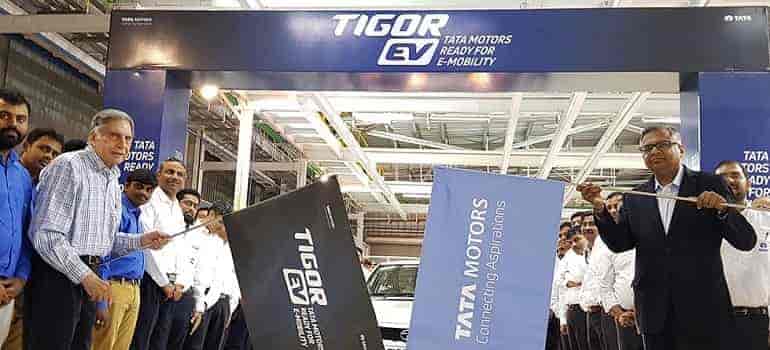
The next few years will be decisive for Tata Motors and the company needs to transform itself to be relevant in the world of future mobility by forming partnerships, developing new solutions and optimise investment, according to Chairman N Chandrasekaran.
In his address to shareholders in the company’s Annual Report for 2018-19, he also reiterated that transition to electric mobility needs to be well planned with government and industry working together to ensure development of ecosystem while incentives are provided to stimulate demand and sustainability goals are achieved.
With Jaguar Land Rover (JLR) facing challenges in the last one year, Chandrasekaran said the British arm is taking steps to cut costs and is actively looking at partnerships while taking a calibrated approach towards future investment in the product portfolio.
“The next few years are going to be decisive for our company. We have to focus on strong operational excellence to deliver positive cashflows while making the right investments to be prepared for the future,” Chandrasekaran said.
He further said, “We need to transform ourselves to be relevant in the world of future mobility. This will require us to form partnerships, develop mobility solutions and optimise our investment in the process.”
On EVs, he said, “Your company’s strong belief is that this is a necessary initiative for India.”
Tata Motors is committed to take the lead in this transition and work with other companies in the Tata ecosystem to help create a viable environment to drive adoption of electric vehicles.
“However, this transition has to be well planned. The government and industry need to work together to ensure that ecosystem is developed, incentives are provided to stimulate demand and sustainability goals are achieved by implementing emission norms across the value chain,” Chandrasekaran added.
On JLR, he said from an operational performance perspective, the last twelve months have been challenging for the company.
“These have resulted in the business reporting a revenue decline this year and an operating loss,” he said adding JLR e-company faced headwinds from external factors, including slowdown of sales in China and Europe along with internal factors of high fixed cost structures, dealer network profitability and high investment leading to cash outflows.
Elaborating on steps taken by JLR to overcome the challenges, Chandrasekaran said it “is taking steps to cut costs while taking a calibrated approach towards future investment in the product portfolio”.
“The company is actively looking at partnerships and prioritising its investments while ensuring that it is not compromising its future. These are critical interventions and JLR is committed to deliver cost and cash improvements,” he said.
Commenting on Tata Motors’ domestic operations, he said under the ‘Turnaround’ programme started in July 2017 the company has undertaken a series of comprehensive steps to address different aspects of the business.
“I am happy to share with you that the result of these initiatives has been visible in your company’s strong operational and financial performance,” he added.
Chandrasekaran, however, said while the company continued to make significant progress, “by no means the work is done”.
“In the CV segment, your company needs to grow and secure the sustainable cashflow from the business and ensure smooth transition to BSVI emission norms,” he said.
In the PV segment, Chandrasekaran said, “Your company needs to enhance its sales and service offering which is a key to growth in volumes and execute its plan to achieve profitability at PBT level.”
Chandrasekaran said the Indian automotive industry is expected to emerge as the world’s third largest passenger vehicle market by 2021, driven by the underlying economic growth, increasing consumption demand and mass urbanisation.
“However, in the short to medium term, the sector faces some challenges due to the ongoing credit crunch, low consumer spending and the transition from BS-IV to BS-VI emission norms by April 1, 2020,” he added.
The growth in the commercial vehicle market is likely to pick-up driven by increased infrastructure spending, growth of new-age industries like e-commerce and further progress in the hub and spoke model of distribution, Chandrasekaran said.
Globally, he said the automotive industry is witnessing disruptive innovations and technological changes are leading to new products and business models including shared mobility, autonomous and connected vehicles.
Concerns about sustainability are leading the governments across the world to push for reduction in the carbon footprint, encouraging the adoption of electric vehicles.
“These changes coupled with geo-political trade situation, uncertainty around Brexit and slow-down in China have led to a period of uncertainty for the global auto industry,” he said.
Source:PTI

